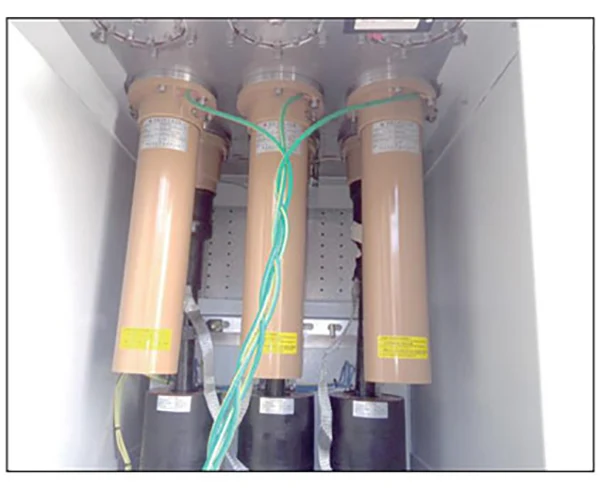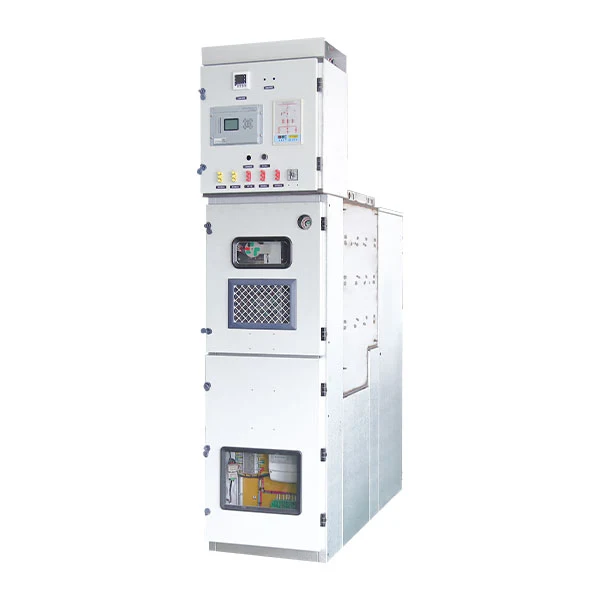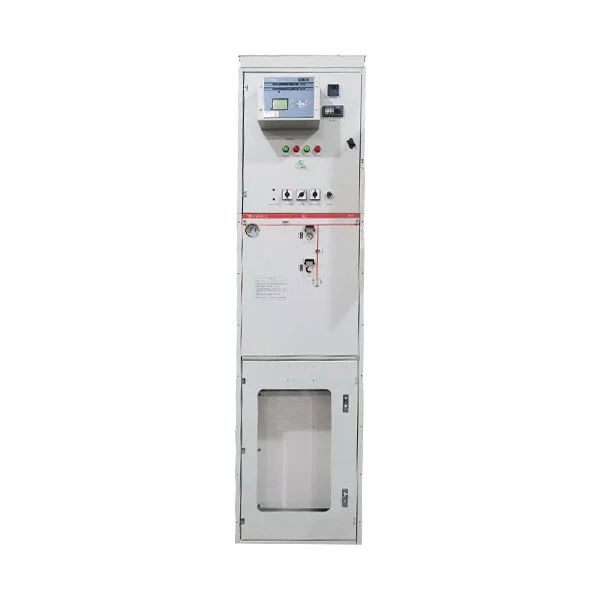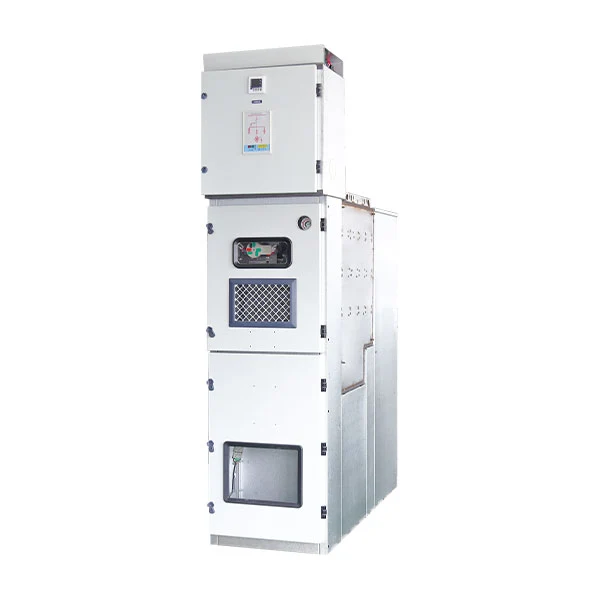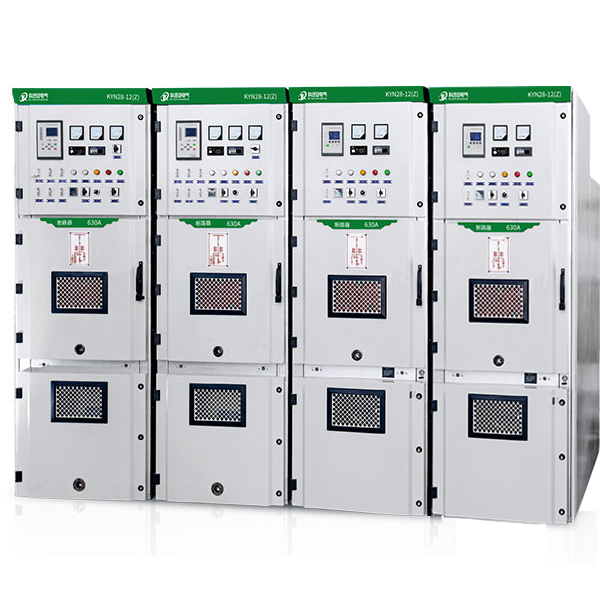12KV 2500A High Current Medium Voltage Switchgear Incoming Cabinet
Enter the realm of advanced power solutions with Kexunan's 12KV 2500A High Current Medium Voltage Switchgear Incoming Cabinet. As a trusted manufacturer with a state-of-the-art factory, Kexunan is committed to delivering high-quality solutions for medium voltage applications. Our meticulously crafted switchgear, designed for high current scenarios, reflects our dedication to excellence in manufacturing. Choose Kexunan as your preferred manufacturer and tap into the expertise of our cutting-edge factory, ensuring the highest standards of durability and performance. Elevate your power infrastructure with Kexunan's reliable and efficient switchgear solutions.
Send Inquiry
Embark on a journey of robust power management with Kexunan's 12KV 2500A High Current Medium Voltage Switchgear Incoming Cabinet. As a distinguished manufacturer, Kexunan is dedicated to delivering durable solutions that redefine reliability in medium voltage applications. Our meticulously crafted switchgear, designed for high current scenarios, ensures enduring quality and long-lasting performance. Trust Kexunan as your preferred manufacturer, and experience the resilience that our switchgear brings to your power infrastructure. Choose Kexunan for durable, high-current solutions that stand as a testament to excellence in medium voltage technology, ensuring a dependable and efficient power distribution system.
In the past few years, as society and the economy have continued to grow and switch technology has advanced, the complexity of engineering projects has risen. There is now a growing demand for compact switch equipment that requires little maintenance and intelligent features. Both domestic and international switch manufacturers are actively developing medium-voltage gas-filled cabinets, also known as gas-insulated switchgear (C-GIS). This type of switchgear involves enclosing high-voltage components like busbars, circuit breakers, isolating switches, and power cables in a shell with lower gas pressure to ensure proper operation.
1. The utilization of sulfur hexafluoride gas as an insulating and arc extinguishing medium allows for a significant reduction in the size of the switchgear, resulting in a more compact design and miniaturization.
2. The conductive part of the main circuit, which ensures high reliability and safety, is securely sealed in SF6 gas, protecting the high-voltage live conductor from external environmental conditions and ensuring long-term safe operation and reliability of the equipment.
3. Furthermore, there is no risk of electric shock or fire.
4. The switchgear adopts an independent modular design, with the air box constructed from a high-precision aluminium plate that can be easily disassembled. The isolation switch utilizes a three-position linear transmission. To simplify control and prevent circuit confusion, an additional control module incorporating nearly 100 points of PLC is incorporated for grounding, isolation switch, and all-electric remote operations. The mechanism switch is also designed with a modular approach, with opening and closing points connected using plum blossom contacts. This eliminates the possibility of non-operation and resolves problems of unstable contact resistance and excessive contact resistance found in the original rotary isolation switch. Furthermore, shielding and voltage equalization covers are installed outside each contact to address partial discharge issues during switch breakpoint production.
5. The gas-insulated switchgear offers convenient application and arrangement. It can function as an independent unit, meeting various main wiring requirements through combination. By delivering the switchgear to the site in units, the on-site installation period can be shortened and reliability improved.
12KV 2500A High Current Medium Voltage Switchgear Incoming Cabinet Execution standards
GB/T11022-1999 Common technical requirements for high-voltage switchgear and control equipment standards
GB3906-2006 3.6kV~40.5kV AC Metal Enclosed Switchgear and Control Equipment
GB311.1-1997 Insulation Coordination of High Voltage Transmission and Transformation Equipment
GB/T16927.1-1997 High voltage testing technology Part: General test requirements
GB/T16927.2-1997 High voltage testing techniques Part 2: Measurement systems
GB/T7354-2003 Partial discharge measurement
GB1984-1989 AC High Voltage Circuit Breakers
GB3309-1989 Mechanical tests of high-voltage switchgear at room temperature
GB4208-2008 Code for Degree of Protection Provided by Enclosures (IP)
GB12022-2006 Industrial sulfur hexafluoride
GB8905-1988 Guidelines for gas management and inspection in sulfur hexafluoride electrical equipment
GB11023-1989 Test method for sulfur hexafluoride gas sealing of high-voltage switchgear
GB/T13384-1992 General technical requirements for packaging of electromechanical products
GB4207-2003 Solid insulation materials - Determination of relative and resistance to electrical trace index under humid conditions
GB/T14598.3-2006 Electrical relays - Part 5: Insulation of electrical relays
GB/T17626.2-1998 Electromagnetic Compatibility Testing and Measurement Techniques - Electrostatic Discharge Reactance Interference Test
GB/T17626.4-2008 Electromagnetic Compatibility Testing and Measurement Techniques - Electrical Fast Transient Pulse Group Immunity Test
GB/T17626.5-2008 Electromagnetic Compatibility Testing and Measurement Techniques - Surge (Impulse) Immunity Test
GB/T17626.12-1998 Electromagnetic Compatibility Testing and Measurement Techniques - Oscillating Wave Immunity Test
12KV 2500A High Current Medium Voltage Switchgear Incoming Cabinet Test Type
◆ Insulation test
◆ Temperature rise test
◆ Loop resistance measurement
◆ Short-time withstand current and peak withstand current tests.
◆ Verification of making and breaking capabilities
◆ Mechanical operation and mechanical characteristic testing tests
◆ Protection level detection
◆ Additional tests on auxiliary and control circuits
◆ Pressure tolerance test for inflatable compartments
◆ Sealing test
◆ Internal arc test
◆ Electromagnetic compatibility test
12KV 2500A High Current Medium Voltage Switchgear Incoming Cabinet Basic Scheme
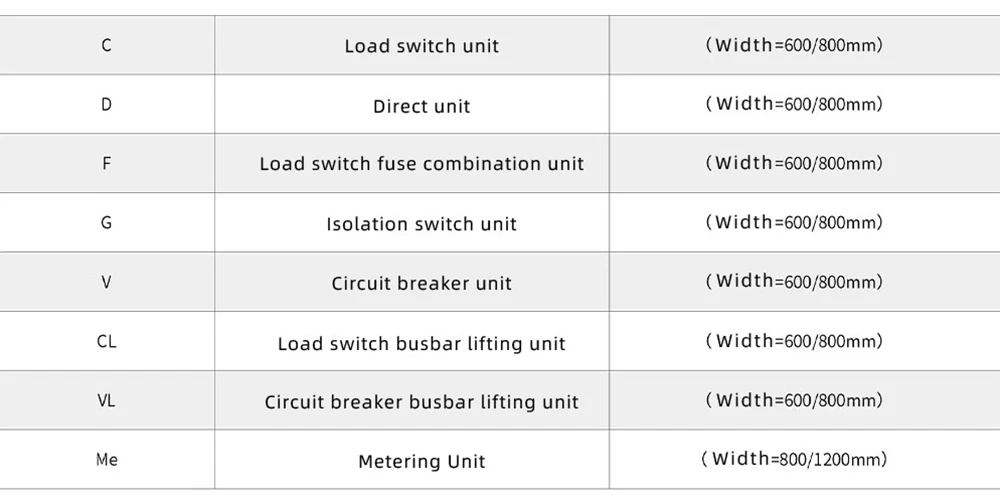

Operation Condition

Technical Parameter
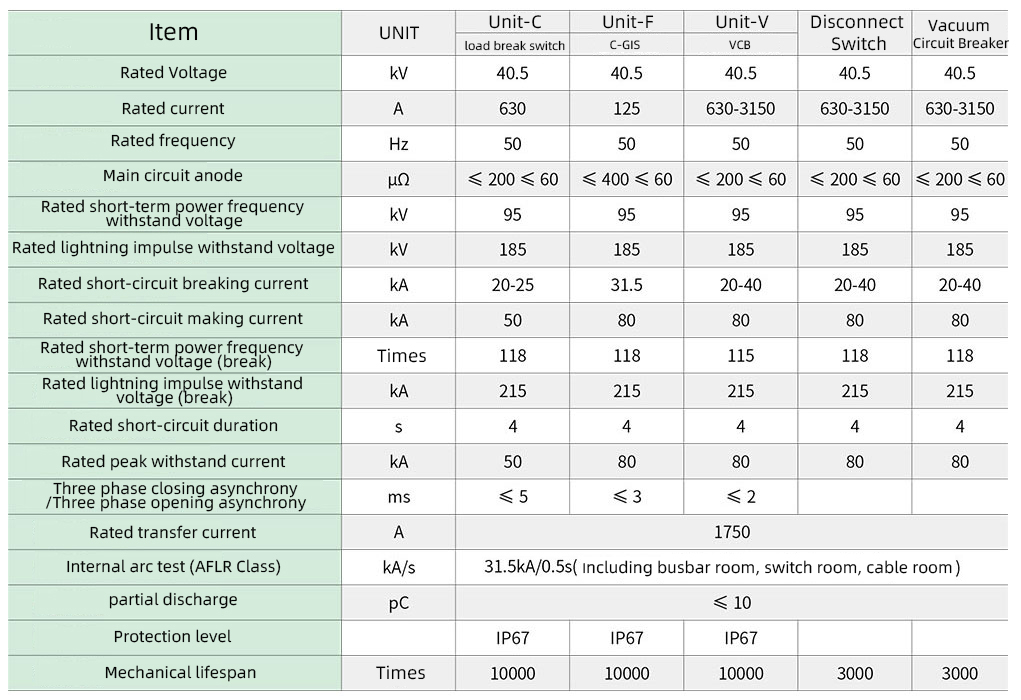
Grounding and Separation
The C-GIS gas-insulated high-voltage switchgear comes in various current levels, such as 630A, 1250A, 1600A, 2000A, 2500A, 3150A, and more. The size of the cabinet can be customized to fit specific requirements. The outer shell is made by cutting and bending an aluminium zinc-coated plate, while the gas box is welded using 304 high-quality stainless steel plates. Each unit can be expanded and combined independently based on the design plan. The cabinet is divided into different rooms: a secondary control room, busbar room, circuit breaker room, circuit breaker operating mechanism room, and cable room. The cable connection height can reach up to 700mm, making it convenient for maintenance and installation. The cabinet is equipped with a comprehensive grounding protection system. It comprises isolated functional compartments such as switch rooms, busbar rooms, cable rooms, and secondary circuit channels. Each functional compartment is separated by a grounding metal partition, ensuring independence.
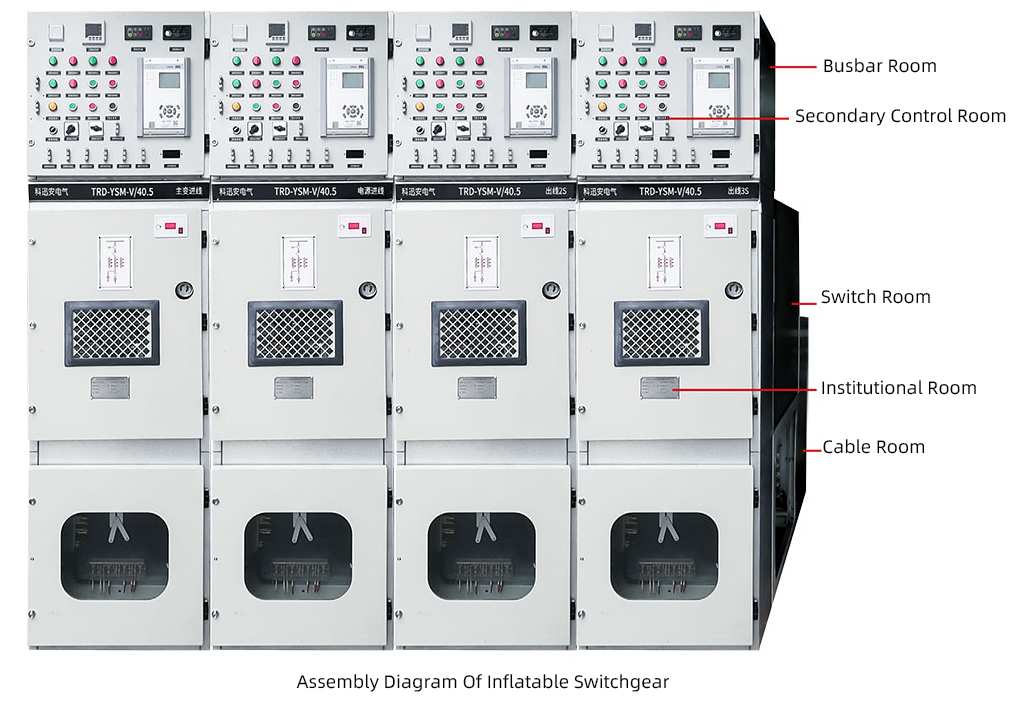
Secondary control room
The secondary control room above the cabinet has installation boards for components and brackets for securing terminal blocks. Within this room, wiring terminals, small busbar terminals, comprehensive protection devices, and other control and operation devices can be installed to enable remote control, telemetry, remote signalling, and local monitoring functions of the system. Circular openings are present on the left and right side panels and terminals, aiding in the connection of the cabinet.
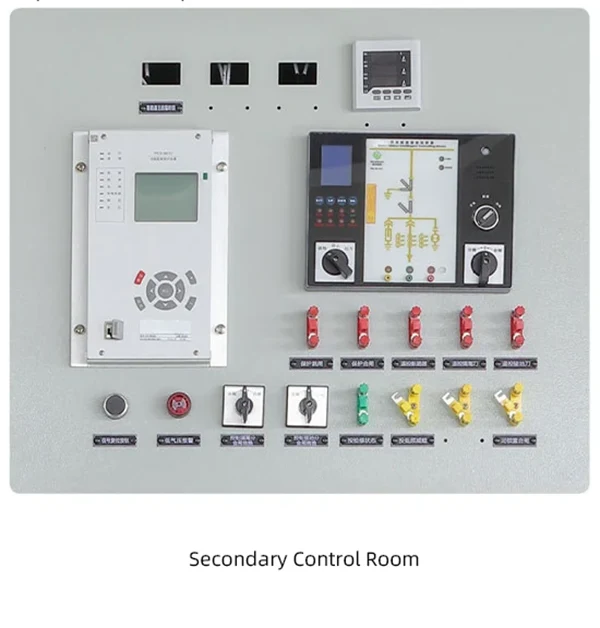
Bus Compartment
The upper air box contains both the busbar room and the isolation mechanism. Once the cabinet is positioned on the ground support, the circuit cabinets on the left and right are securely joined with the busbars through cabinet merging.

Switch Room
The middle of the cabinet houses the switch room, which consists of a gas-insulated switch cabinet with two chambers, one above the other. The upper chamber contains a three-position isolation switch, while the lower chamber holds a vacuum circuit breaker. The busbar, isolation switch, and circuit breaker arrangement follows an "up, middle, and down" configuration. The single chamber structure is uncomplicated, inexpensive, and easy to produce. However, when the components are placed together in a single chamber, they can easily interfere, resulting in lower reliability. On the other hand, the multi-chamber structure module allows for easy replacement and prevents mutual interference among multiple components, ensuring high safety. Nevertheless, the multi-chamber structure is intricate, challenging to manufacture, and expensive.

Institutional Room
The spring mechanism for operation is positioned on a flat surface, while the mechanisms for isolation and circuit breaking are separate. Before and after integrating with the insulation rod of the vacuum arc extinguishing chamber, the mechanism streamlines the transmission process. The mechanism's output features are more compatible with the circuit breaker's opening and closing characteristics, resulting in lower power usage and enhanced mechanical dependability and adaptability.
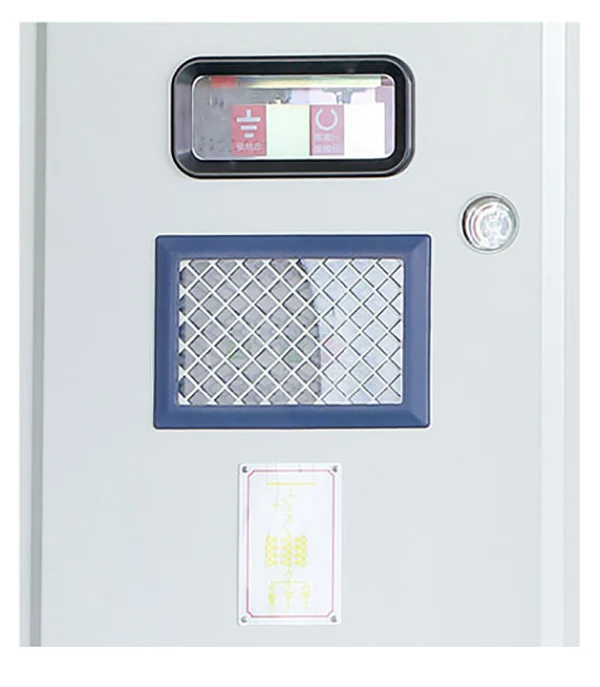
Cable Room
The cabinet is positioned above the cable room and has a separate channel for relieving pressure. The distance from the ground to the cable connection terminals can reach 700mm. To adhere to regulations, grounding interlocks are installed in the cable room, allowing two cables and lightning arresters to be installed in each circuit. The incoming and outgoing cables and lightning arresters are connected internally through a cone insertion technique.
